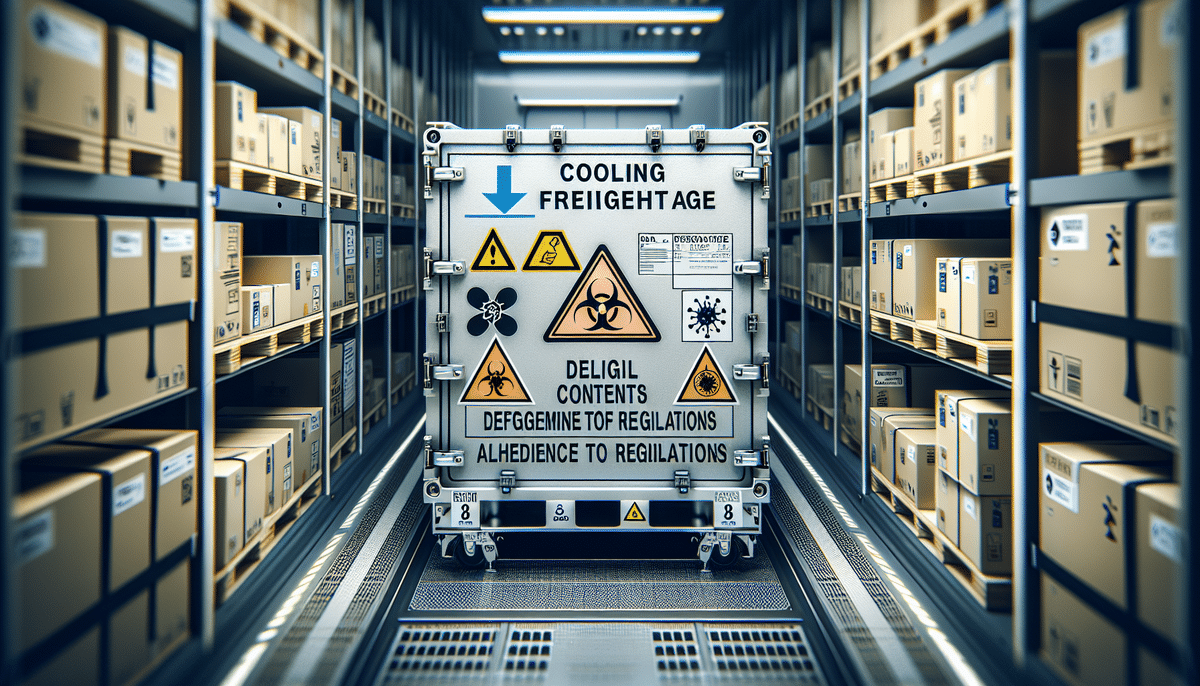FedEx Offers Guidelines for Shipping Medical Devices and Equipment
Shipping medical devices and equipment is a complex process that requires meticulous attention and handling to ensure safe delivery to their intended destinations. Proper shipping procedures are essential not only to protect these sensitive items during transport but also to ensure compliance with regulatory requirements governing their transportation. FedEx, a trusted courier service provider, offers comprehensive guidelines for shipping medical devices and equipment, aiding businesses and healthcare organizations in transporting their sensitive cargo safely and efficiently.
Why Proper Shipping of Medical Devices and Equipment is Crucial
Medical devices and equipment are integral to the healthcare industry, often designed to save lives by facilitating diagnosis, treatment, and patient monitoring. Ensuring the proper shipping of these devices is paramount to guarantee their safe delivery, functionality, and compliance with regulatory standards during transit. According to a FDA report, improper shipping practices can lead to significant damage, rendering devices unusable and disrupting critical healthcare services.
Poor shipping practices not only damage the devices but also cause delays in patient care. For instance, if a medical device is compromised during transport, it may require repair or replacement, delaying essential treatments and potentially jeopardizing patient health. Additionally, delayed deliveries can create scheduling conflicts within healthcare facilities, affecting the timely execution of other medical procedures.
Compliance with regulatory requirements is another critical aspect of shipping medical devices. Many devices are subject to stringent regulations, and non-compliance can result in hefty fines, legal repercussions, and tarnished reputations. Proper shipping practices, including accurate packaging and labeling, help ensure adherence to these regulations, mitigating the risk of legal and financial consequences.
Different Types of Medical Devices and Equipment that Require Special Shipping
Several categories of medical devices and equipment necessitate special shipping procedures due to their sensitivity, fragility, or hazardous nature. These include:
- Diagnostic equipment
- Surgical instruments
- Pacemakers and stents
- Respirators and ventilators
- Prosthetics and medical implants
Transporting these delicate items requires specialized conditioning, precise labeling, and adherence to international safety and traceability regulations. Additionally, items such as radioactive materials used in medical imaging, biological samples, vaccines, and temperature-sensitive products like blood samples and medications demand temperature-controlled packaging to maintain their efficacy and safety during transit.
The Importance of Proper Packaging for Safe Transport of Medical Devices and Equipment
Proper packaging is a crucial component in ensuring the safe and secure transportation of medical devices and equipment. Shipping containers must be designed to protect contents from physical damage and environmental factors. Employing protective packaging materials such as foam inserts, cushioning materials, and shock-absorbing components can prevent impact and vibration damage during transport.
Moreover, appropriate packaging maintains the sterility of medical devices, preventing contamination and ensuring that they remain sterile until use. This is particularly vital for surgical instruments and implants that must be free from contaminants to avoid infections and other complications.
Effective packaging also mitigates the risk of theft or loss. Utilizing tamper-evident containers secured with seals or locks ensures that unauthorized access is prevented, safeguarding the medical devices and equipment throughout their journey.
How to Prepare Your Medical Devices and Equipment for Shipping with FedEx
Preparation is key to ensuring the safe and secure transportation of medical devices and equipment. Organizations should undertake the following steps before shipping:
- Disinfection and Cleaning: Ensure all devices are thoroughly disinfected and cleaned to maintain sterility.
- Proper Packaging: Use appropriate packaging materials to protect devices during transit.
- Hazardous Material Identification: Identify and properly document any hazardous materials, ensuring compliance with shipping regulations.
- Device Testing: Test devices prior to shipping to identify and address any potential damage or issues.
- Temperature Requirements: Assess and implement necessary temperature controls for temperature-sensitive devices, using insulated containers or dry ice as needed.
Accurate labeling with temperature requirements and other pertinent information is essential. Failure to maintain required temperatures can compromise device functionality, posing serious risks to patients and healthcare providers.
FedEx's Recommended Procedures for Shipping Sensitive Medical Devices and Equipment
FedEx offers several recommendations to ensure the safe transport of sensitive medical devices and equipment:
- Proper Packaging and Labeling: Ensure devices are securely packaged and accurately labeled.
- Customs Documentation: Complete all necessary customs documentation to facilitate smooth international shipping.
- Temperature-Controlled Options: Utilize FedEx’s temperature-controlled shipping options for devices requiring specific temperature ranges.
- Accurate Shipping Paperwork: Maintain all necessary shipping paperwork and obtain approvals from relevant regulatory agencies.
- Contingency Planning: Develop a plan to address potential issues during transport, ensuring swift resolution to maintain delivery schedules.
FedEx recommends using their Priority Alert service, which offers 24/7 monitoring and proactive intervention to ensure timely and secure delivery of critical shipments. This service includes a dedicated team of experts who oversee the shipment from origin to destination, providing real-time updates and addressing any challenges that may arise.
The Benefits of Using FedEx's Services for Shipping Medical Devices and Equipment
Choosing FedEx for shipping medical devices and equipment offers numerous benefits:
- Expertise: FedEx has extensive experience in handling sensitive healthcare products, supported by specialized teams dedicated to healthcare logistics.
- Customizable Packaging: FedEx provides tailored packaging solutions to meet the specific needs of various medical devices.
- Priority Shipping Services: Offers expedited shipping options to ensure timely delivery of critical equipment.
- Robust Tracking and Temperature Control: Advanced tracking systems and temperature control options guarantee the integrity of shipments.
- Regulatory Compliance: FedEx offers solutions to ensure compliance with all legal requirements and documentation standards for each shipment.
- Global Network: With a presence in over 220 countries and territories, FedEx ensures reliable and efficient shipping services worldwide, catering to remote and hard-to-reach locations.
- Sustainability: FedEx’s commitment to sustainability through initiatives like alternative fuels and energy-efficient technologies supports environmentally-friendly practices.
By leveraging FedEx’s comprehensive services, healthcare providers can ensure the safe and efficient transport of their medical devices and equipment while contributing to a more sustainable future.
How to Track Your Shipment of Medical Devices and Equipment with FedEx
FedEx offers a robust tracking system that allows organizations to monitor their shipments in real-time. Users can:
- Log into their FedEx accounts to view the current status of their shipments.
- Receive email or text updates about the location and status of their devices or equipment.
- Access detailed insights and analytics regarding shipment performance.
- Utilize tools to manage their accounts and address any potential issues or delays promptly.
This comprehensive tracking capability ensures transparency and allows organizations to maintain control over their critical shipments.
Understanding the Regulatory Requirements for Shipping Medical Devices and Equipment
Shipping sensitive medical devices and equipment necessitates adherence to various regulatory requirements to ensure proper handling, quality maintenance, and accurate documentation. Key regulatory bodies and standards include:
- International Air Transport Association (IATA): Regulations for air transport of medical devices, including packaging and labeling standards.
- International Maritime Organization (IMO): Guidelines for the maritime transport of hazardous materials and medical equipment.
- Food and Drug Administration (FDA): U.S. regulations governing the transportation of medical devices to ensure safety and compliance.
- European Medicines Agency (EMA): European regulations overseeing the shipment of medical products within the EU.
Compliance may involve obtaining necessary licenses, certifications, or clearances from these regulatory bodies. It's imperative for organizations to stay updated with the latest regulations to avoid non-compliance penalties and ensure the seamless transport of their medical devices and equipment.
Common Mistakes to Avoid When Shipping Sensitive Medical Devices and Equipment
When shipping sensitive medical devices and equipment, avoiding common mistakes is essential to safeguard the integrity and timely delivery of shipments. Common pitfalls include:
- Inadequate Packaging: Using insufficient or inappropriate packaging materials can lead to damage during transit.
- Incorrect Addresses: Shipping to incorrect or incomplete addresses can result in lost or delayed shipments.
- Missing Shipping Documents: Failing to provide necessary shipping documentation can cause customs delays and compliance issues.
- Poor Labeling: Inaccurate or unclear labels can lead to mishandling or misrouting of shipments.
Avoiding these mistakes ensures that medical devices and equipment reach their destinations safely and on schedule, maintaining the trust between shippers and their clients.
Best Practices for Shipping Temperature-Sensitive Medical Devices and Equipment
Temperature-sensitive medical devices and equipment require special handling to maintain their efficacy and safety. Best practices include:
- Temperature-Controlled Packaging: Utilize insulated containers and refrigerated packaging to maintain required temperature ranges.
- Accurate Labeling: Clearly label packages with temperature requirements to inform handlers of necessary precautions.
- Temperature Tracking: Implement temperature monitoring devices to record and track temperatures throughout transit.
- Proper Insulation: Use materials such as dry ice or gel packs to provide sustained temperature control during transportation.
Adhering to these practices ensures that temperature-sensitive devices remain functional and safe upon arrival, preventing costly damages and ensuring patient safety.
How to Ensure Compliance with International Regulations When Shipping Medical Devices and Equipment
To ensure compliance with international regulations, businesses and healthcare organizations should:
- Understand Relevant Regulations: Familiarize themselves with the shipping regulations of the destination country, including import/export laws and medical device standards.
- Obtain Necessary Certifications: Secure required licenses, certifications, or clearances from relevant regulatory bodies.
- Accurate Documentation: Maintain comprehensive and accurate shipment documentation, including invoices, packing lists, and regulatory compliance certificates.
- Work with Experienced Couriers: Partner with courier services like FedEx that specialize in handling regulated medical shipments and understand international compliance requirements.
By implementing these strategies, organizations can navigate the complexities of international shipping regulations, ensuring their medical devices and equipment are transported legally and efficiently across borders.
The Future of Shipping Medical Devices and Equipment: Trends to Watch Out For
The shipping of medical devices and equipment is continually evolving with advancements in technology. Key trends to watch include:
- Artificial Intelligence and Machine Learning: Enhancing shipping processes through predictive analytics and optimized routing.
- Internet of Things (IoT): Utilizing IoT devices for real-time tracking and monitoring of medical shipments, ensuring optimal conditions are maintained.
- Blockchain Technology: Implementing blockchain for enhanced security, transparency, and traceability in healthcare logistics.
- Automation and Robotics: Streamlining warehouse and handling procedures to increase efficiency and reduce manual errors.
- Sustainable Shipping Practices: Emphasizing eco-friendly packaging and transportation methods to reduce the carbon footprint.
These trends are set to revolutionize the logistics of medical device shipping, offering improved efficiency, security, and sustainability for healthcare providers worldwide.
Case Studies: Success Stories on Safe Transport of Sensitive Medical Devices with FedEx
Several success stories highlight the effectiveness of FedEx in transporting sensitive medical devices and equipment:
- Spinal Surgery Device: A medical device manufacturer collaborated with FedEx to ship a specialized device used in spinal surgery. FedEx’s meticulous handling and secure packaging ensured the device arrived in pristine condition, facilitating successful surgical procedures.
- Ventilator Distribution During COVID-19: In response to the COVID-19 pandemic, a healthcare organization partnered with FedEx to distribute ventilators globally. Despite logistical challenges, FedEx ensured the timely and safe delivery of essential ventilators, supporting critical patient care during the crisis.
These case studies demonstrate FedEx’s capability to handle complex shipping requirements, ensuring that sensitive medical devices reach their destinations safely and reliably.
Conclusion
Ensuring the safe and secure shipping of medical devices and equipment is vital for maintaining the integrity of sensitive healthcare products and complying with regulatory standards. Healthcare organizations and businesses must adhere to comprehensive guidelines to guarantee the successful transport of their medical devices. By preparing adequately and partnering with reliable and experienced courier services like FedEx, organizations can achieve the safe and efficient delivery of their medical equipment, ultimately supporting vital healthcare operations and patient well-being.






















